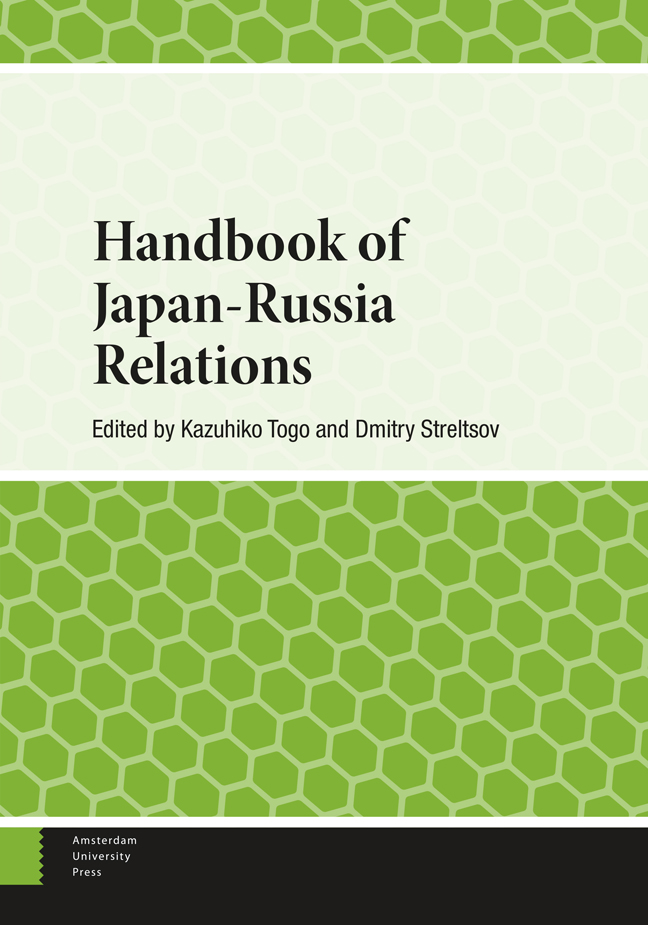Book contents
- Frontmatter
- Contents
- Dedication
- Acknowledgements
- Contributors
- Abbreviations
- Introduction
- Part 1 War and Peace: Diplomatic Relations and Security
- Part 2 Territory
- Part 3 The Economy and Energy
- Part 4 Disaster Cooperation
- Part 5 Culture
- Part 6 Perceptions of the Other
- Appendix 1 1956 Joint Declaration
- Appendix 2 Tokyo Declaration (1993)
- Appendix 3 Moscow Declaration (1998)
- Appendix 4 Irkutsk Statement (2001)
- Appendix 5 Foreign Ministry Statement (2022)
- Index
7 - Russia-Japan Trade and Economic Relations: The Russian Perspective
Published online by Cambridge University Press: 26 March 2024
- Frontmatter
- Contents
- Dedication
- Acknowledgements
- Contributors
- Abbreviations
- Introduction
- Part 1 War and Peace: Diplomatic Relations and Security
- Part 2 Territory
- Part 3 The Economy and Energy
- Part 4 Disaster Cooperation
- Part 5 Culture
- Part 6 Perceptions of the Other
- Appendix 1 1956 Joint Declaration
- Appendix 2 Tokyo Declaration (1993)
- Appendix 3 Moscow Declaration (1998)
- Appendix 4 Irkutsk Statement (2001)
- Appendix 5 Foreign Ministry Statement (2022)
- Index
Summary
This chapter invites the reader to look at the dynamics and structure of foreign economic relations between Japan and Russia after 2000, not only through the prism of purely economic interests and export-import needs of each country, but on the assumption that economic relations are largely determined by the bilateral political agenda and “turns” of Russian domestic economic policy. This view allows a clearer understanding of the alternation of ups and downs in bilateral ties, just as the specifics of macroeconomic structures give an idea of the structural features of these ties. Attention is also paid to the situation of deformation of economic cooperation due to the emergence in 2022 of a fundamentally new stage—the “sanctions economy”—and its impact on the current and future development of bilateral cooperation.
Introduction
Stable and relatively large-scale trade and economic interactions between Russia and Japan quickly began to turn from those of a sporadic nature into an important component of general economic and territorial development for both countries from the first half of the 1960s due to a certain economic interdependence which arose between the countries. Japan was going through an active stage of primary industrialization. The extensive nature of Japan’s economic development, plus the high level of material intensity of rapidly developing heavy industries (energy, metallurgy, pulp and paper, woodworking, machinery) at that time led to a growing need for sources of relatively cheap and nearby raw materials (coal, wood, metal ores). In turn, since the early 1960s, Russia had been looking for an opportunity to develop its eastern regions, primarily the Far East, based on the export specialization of the economy, in dire need of markets in the Asia-Pacific region and sources of investment, technologies, and fixed capital elements. This gave rise to two new phenomena in recent Soviet economic history—the regionalization of foreign trade through the creation of coastal trade between the territories of the Far East and the prefectures of Japan, and trade and investment interactions on the principle of “money—production—export.” The testing ground for the development of both forms was the Soviet Far East, for which this was a revival of the concession and trade policy of the 1920s.
In 1964, the first intergovernmental Soviet-Japanese compensation agreement on timber was concluded, which was subsequently extended several times. It was followed by agreements on coal, oil and gas exploration.
- Type
- Chapter
- Information
- Handbook of Japan-Russia Relations , pp. 117 - 139Publisher: Amsterdam University PressPrint publication year: 2024

